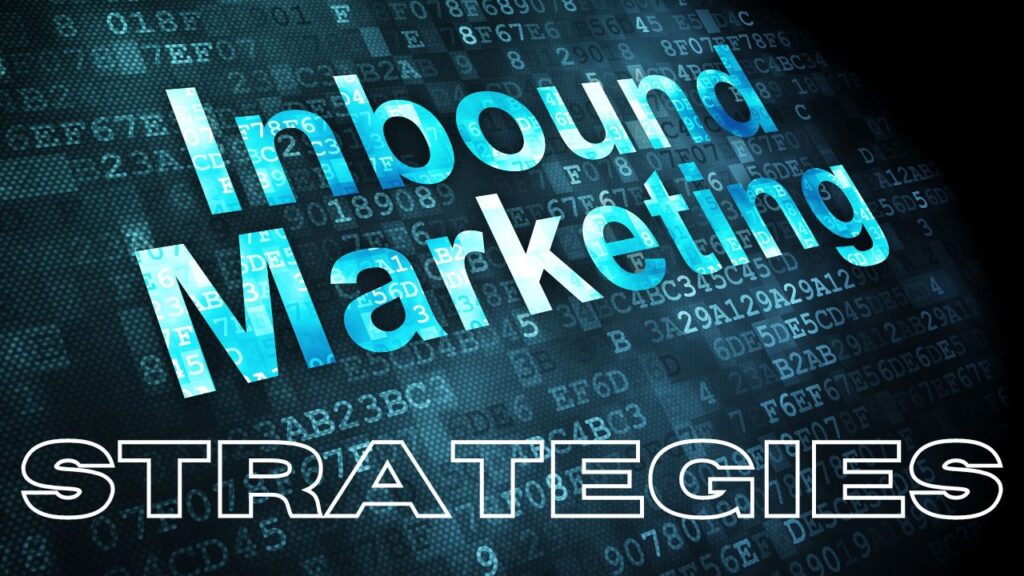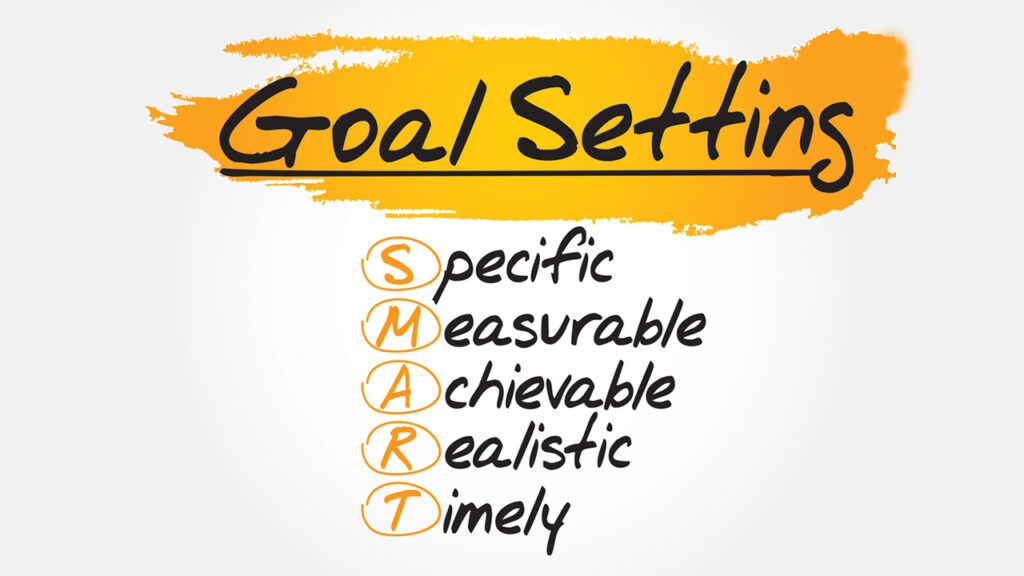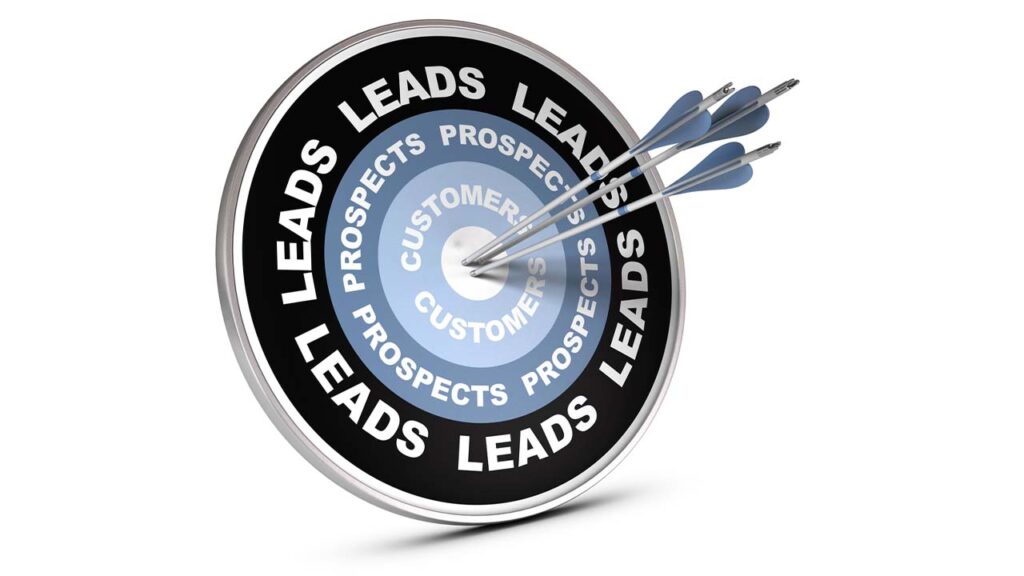Maximizing Lead Generation with Effective Inbound Content Marketing Strategies
Brett Lewis
Content Marketing - April 14, 2024

Are you looking to drive more leads and foster deeper customer engagement? Inbound content marketing might just be the answer. Unlike traditional marketing that interrupts, inbound marketing magnetizes your audience by delivering value through carefully crafted content. In this article, we dive into the strategies that transform your content into a powerhouse of customer attraction and retention, and we’ll guide you through creating a compelling inbound content marketing plan that converts.
Key Takeaways
Inbound content marketing focuses on attracting, engaging, and delighting customers via content creation and strategic distribution, differentiating from traditional advertising by providing value and being customer-centric.
Effective content marketing requires understanding the target audience, creating tailored content for various buyer journey stages, and optimizing distribution with strong SEO to ensure visibility and lead conversion.
Measuring the success of inbound content marketing involves tracking key metrics such as organic traffic, conversion rates, and ROI, and using data-driven decision-making to refine strategies and improve engagement and conversions.
Understanding Inbound Content Marketing

Inbound marketing is a strategic method that defines inbound marketing by incorporating an inbound marketing strategy focused on inbound methodology principles, such as:
Building meaningful relationships with consumers, prospects, and customers
Centering around customers actively seeking out a company or service by themselves
Giving a brand a unique voice
Helping gain trust and credibility with customers
This approach is different from traditional advertising methods that interrupt consumers and can be highly effective in today’s digital age.
At the heart of inbound marketing lies content creation and sharing. Rather than relying solely on traditional advertising, inbound marketing uses content to attract customers. Some examples of content that can be used in inbound marketing include:
Blog posts
Ebooks
Webinars
Podcasts
Content is the magnet that pulls existing customers and potential clients towards a brand.
But what role does content play in inbound marketing, and what are its key components? Let’s find out.
The Role of Content in Inbound Marketing
Content is the central ingredient of both inbound marketing and content marketing. Whether it’s a blog post, a webinar, or a social media update, content provides value to the target audience and guides them through their buyer’s journey. But there’s a distinction between content marketing and inbound marketing. While content marketing focuses more narrowly on content creation and distribution, inbound marketing ensures a website and its content are inviting to compel visitor action.
The benefits of content marketing are manifold. It:
Builds brand awareness
Builds brand loyalty
Generates sales
Nurtures relationships with prospects
Guides customers through the buying process
Inspires customers to make a purchase
On the other hand, inbound marketing focuses on attracting, engaging, and delighting the ideal customer through various content-driven stages. A strategic inbound marketing plan takes into account the needs of prospects at each stage of their buying journey in order to convert website visitors into leads. This customer-centric approach is key to effectively engaging and nurturing potential customers. Simply put, content in inbound marketing vs other marketing strategies is not about selling; it’s about helping.
Key Components of Inbound Content Marketing
Inbound content marketing starts with content creation, which is pivotal in providing robust information about a brand, its products, and engaging customers through educational content. The content produced should cater to various stages of the buyer’s journey, from raising awareness to assisting in decision-making, hence creating tailored marketing experiences.
The journey doesn’t end with content creation. A strategic approach to content marketing involves not only creating compelling content but also ensuring its optimized distribution across channels, backed by strong SEO positioning to attract the target audience effectively. This requires mastery of a range of technical skills including creating valuable content, SEO, web design, and integrating these with inbound principles such as organic growth and lead management.
With an understanding of inbound content marketing in place, let’s develop a comprehensive plan.
Developing a Comprehensive Inbound Content Marketing Plan

Inbound and content marketing is not a one-size-fits-all strategy. It encompasses a range of marketing categories, including:
It should be shaped to align with customer needs and the brand’s intended voice. This involves providing valuable content that leads to enhanced customer engagement and business growth.
Constructing a thorough inbound content marketing plan entails:
Conducting a content audit to assess existing content performance
Understanding audience preferences through analysis
Determining suitable content formats
Implementing result tracking systems for measuring success
But where do we start? It begins with setting clear goals and objectives.
Setting Goals and Objectives
Inbound marketing goals should be established using the SMART Goal Framework to ensure they are:
Specific
Measurable
Attainable
Relevant
Timely
For instance, a specific goal could be to increase website visitors or subscribers within a certain timeframe, which allows for objective performance assessment.
It’s crucial to align marketing goals with the overall business goals. For example, if the business aims to increase revenue, generating more sales qualified leads could be an effective marketing goal. Once we have clear goals in place, the next step is to understand who we’re trying to reach – the target audience.
Identifying Target Audience
Defining buyer personas helps in understanding the audience’s characteristics, interests, priorities, and goals for targeted content creation. Surveys, feedback forms, and social media analytics are valuable tools for acquiring insights into the audience’s needs, behaviors, and content preferences.
Social media serves as a crucial channel for two-way communication with the audience, enabling businesses to adapt their strategies based on direct feedback and engagement. Additionally, a customer journey map aids in developing content tailored for each touchpoint in the customer’s lifecycle, from initial awareness through to post-purchase advocacy.
Once you have a clear understanding of the target audience, the next step is to select suitable content formats and utilize multiple channels.
Selecting Content Formats and Channels
Inbound marketing strategies, which include various inbound marketing tactics, incorporate both brand-owned content formats like blog posts, webinars, and newsletters, as well as external coverage of the brand. However, when selecting content formats and channels for repurposing, it’s crucial to consider the content’s purpose, style, tone, and the target audience’s consumption preferences to maximize reach and engagement.
Having developed a comprehensive inbound content marketing plan, it’s time to enhance visibility. The next step in our journey is to delve into the realm of Search Engine Optimization (SEO).
Enhancing Visibility with Search Engine Optimization (SEO)

Content created for inbound marketing can significantly enhance a brand’s search engine optimization (SEO), essential for attracting organic traffic and supporting the various stages of the inbound marketing conversion funnel. To increase online visibility and attract potential leads, optimizing content with a strategic SEO approach targeting specific keywords and search intents is crucial.
Conducting longtail keyword research and creating content that addresses the target audience’s problems or queries contribute to a visible and effective SEO presence. When SEO efforts are successful, they lead to increased website traffic growth, suggesting that optimized content is attracting a higher number of visitors through search engines, enhancing the effectiveness of the inbound content marketing strategy. However, SEO is not just about keywords; it’s also about on-page and off-page techniques.
Keyword Research and Selection
Researching longtail keywords helps in understanding potential customers’ specific queries and aligning content to meet their information needs. Additionally, utilizing longtail keyword research to identify low-competition keywords can quickly enhance a website’s positioning in search engine results pages.
Keyword research is a fundamental aspect of inbound content marketing that helps in identifying the terms and phrases the target audience is searching for. Effective keyword selection, focused on longtail and low-competition keywords, contributes to increased visibility and lead generation through organic search. Coupled with keyword research, on-page and off-page SEO techniques also play a significant role.
On-Page and Off-Page SEO Techniques
Content can be used to build authority in search and rank for important topics. This involves optimizing metadata, such as title tags and descriptions, improving site speed, and creating high-quality, link-worthy content. On the other hand, off-page SEO techniques include building high-quality backlinks, social signals, and brand mentions on other websites.
These techniques help enhance search engine visibility and drive more organic traffic to your website, leading to an increase in lead generation and conversion rates.
Now that we’ve covered SEO, let’s move on to another crucial aspect of inbound content marketing: social media marketing.
Utilizing Social Media Marketing for Inbound Content Promotion

Social media is a critical aspect of inbound marketing and a top driver of website visitors. It plays a central role in promoting content and attracting new, qualified traffic. Social media marketing provides businesses with insights into market trends and consumer behavior, essential for tailoring inbound content to audience preferences.
Through social media, companies can cultivate their brand identity and build meaningful customer relationships, enhancing the effects of their inbound marketing efforts. But how do we choose the right social media platforms, and how do we create engaging social media content?
Choosing the Right Social Media Platforms
Selecting the most appropriate social media platform requires thorough research into the audience’s demographics, behaviors, and preferences to ensure the platform aligns with the business’s target market. Ensuring that social media strategies are in line with the overarching inbound marketing goals fosters a unified brand message and a consistent marketing strategy.
Choosing the right platform is not just about where your target audience is; it’s also about where your brand can authentically engage. Once we’ve chosen the right platforms, the next step involves creating engaging social media content.
Creating Engaging Social Media Content
Understanding the four states of the inbound process—ATTRACT, CONVERT, CLOSE, and DELIGHT—is crucial for creating content that engages users on social media. Following Canva’s example of sharing quick tidbits, newly released features, and visually appealing icons and illustrations, you can create content that resonates with the target audience.
Engaging with the audience through comments, messages, and feedback is essential for fostering community and making meaningful connections on social media platforms. This engagement and creation of resonant content is fundamental in building brand loyalty, which in turn encourages sharing and further content interaction. With a solid social media strategy in place, let’s move towards implementing lead generation tactics.
Implementing Lead Generation Tactics

A lead magnet is a free item or service provided in exchange for contact details, which acts as an incentive for potential customers to engage with a brand. Some examples of lead magnets include:
Ebooks
Whitepapers
Checklists
Templates
Webinars
Free trials
Offering valuable content like these lead magnets encourages visitors to share their personal information because these resources build trust and recognition of value.
The main element on a lead generation landing page is a form designed to capture contact details, ideally containing a maximum of 2-3 fields to avoid overburdening potential leads. Every page of a website should offer opportunities to capture leads, ensuring continuous engagement and conversion of visitors throughout the site.
Understanding the customer’s journey is crucial to boost leads, effectively utilize content in campaigns, and ensure leads are captured and nurtured when they are most ready to engage. Let’s delve deeper into creating high-quality lead magnets and optimizing conversion paths.
Creating High-Quality Lead Magnets
Lead magnets can include various resources like trial subscriptions, white papers, and samples, which serve to attract leads in a cost-effective way. A high-quality lead magnet is simple, action-oriented, provides value immediately after it’s requested, and showcases a business’s expertise with practical, reusable, and evergreen content.
Incorporating interactive content such as quizzes and assessments into lead magnets can significantly increase their effectiveness by offering personalized insights. Some tips for creating effective lead magnets include:
Naming the lead magnet with clear and memorable terms
Offering valuable and relevant content
Using compelling visuals and design
Including a strong call-to-action
Optimizing conversion paths
By following these tips, you can improve the conversion effectiveness of your lead magnets.
Optimizing Conversion Paths
Optimizing landing pages is crucial for converting visitors into leads by focusing on a singular offer and personalizing content to the audience’s needs and pain points. Analyzing visitor data can inform tweaks to landing page elements, enhancing the lead generation rate.
Strong CTAs are essential for a successful inbound marketing website as they motivate the customer to purchase and move further along the conversion path. Some tips for designing user-friendly forms include:
Using fields that gather pertinent data for lead qualification
Making the form visually appealing and easy to navigate
Keeping the form short and only asking for necessary information
Using clear and concise instructions for filling out the form
By following these tips, you can more effectively collect information from prospects and improve your lead generation efforts.
Now that we’ve covered lead generation tactics, let’s move on to analyzing and measuring the success of our inbound content marketing.
Analyzing and Measuring Inbound Content Marketing Success
Tracking specific key metrics over time is crucial to determine the effectiveness of inbound marketing strategies. In the early stages of inbound marketing implementation, it’s vital to identify and consistently measure the right key metrics. Key performance indicators are essential for assessing the effectiveness of marketing efforts and identifying areas for improvement in inbound content marketing.
But how do we monitor these key metrics? And how do we use this data to make informed decisions that will enhance our inbound content marketing strategies? Let’s explore.
Monitoring Key Metrics
Defining goals and objectives for inbound content marketing should include identifying key performance indicators and aligning them with business objectives to measure the success of content efforts. Important key performance indicators for inbound marketing include:
Qualified leads
Organic traffic
Social media traffic
Time-on-site
Time-on-page
Bounce rate
Conversion rate
Customer acquisition cost
Lifetime value of a customer
Return on investment
Although raising brand awareness is an essential aim of inbound marketing, it presents measurement challenges. Closed-loop reporting is necessary to fully understand the impact of inbound marketing on various metrics. This integration includes:
Analytics
Marketing automation
CRM
BI tools
Making Data-Driven Decisions
A/B testing is a key method for utilizing data to test different strategies and identify which one performs better in terms of conversion. By analyzing the results of continuous testing, marketers can achieve higher conversion rates from their lead magnets.
An iterative process of testing, measurement, and application of insights is essential to sustain and improve the effectiveness of inbound content marketing. Making data-driven decisions is fundamental in refining and enhancing inbound content marketing strategies. We’ve now navigated the full journey of inbound content marketing, from understanding to implementation and measurement. Let’s recap.
Summary
Inbound content marketing is a powerful approach that focuses on creating valuable content to attract customers organically. It involves understanding the concept and its key components, developing a comprehensive plan, enhancing visibility with SEO, utilizing social media marketing, implementing lead generation tactics, and analyzing and measuring success.
Throughout this journey, we’ve seen how each step, from setting SMART goals to making data-driven decisions, plays a crucial role in creating a successful inbound content marketing strategy. As you embark on this journey, remember, inbound content marketing is not just about selling; it’s about helping. It’s about building meaningful relationships and creating value for your customers. So start creating, start helping, and let the power of inbound content marketing propel your brand to new heights.
Frequently Asked Questions
What is the difference between inbound marketing and pull marketing?
In conclusion, the difference between inbound marketing and pull marketing is that pull marketing prioritizes attracting your ideal customers by building relationships and earning their trust before making an offer.
What are the three rules of content inbound marketing?
The three rules of content inbound marketing are being informative, interesting, and relevant. These three characteristics are essential for quality content, regardless of the niche or platform.
What is an example of inbound marketing?
An example of inbound marketing is blog posts, social media engagement, search engine optimization, and email nurturing campaigns. These strategies aim to attract and engage potential customers rather than directly selling to them.
How can I develop a comprehensive inbound content marketing plan?
To develop a comprehensive inbound content marketing plan, start by setting SMART goals, identifying your target audience, and selecting suitable content formats and channels. These steps will lay a strong foundation for your strategy.
What is the importance of SEO in inbound content marketing?
SEO is crucial in inbound content marketing as it helps attract organic traffic, improves visibility, and generates leads for the business.
